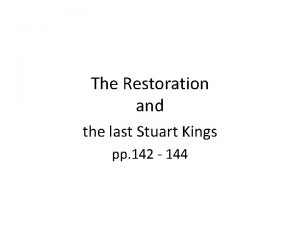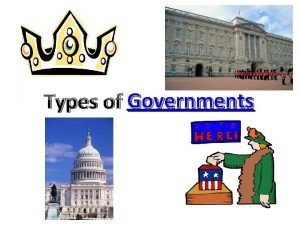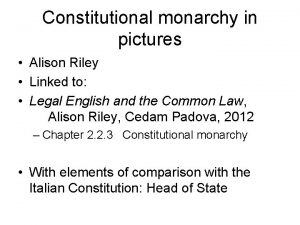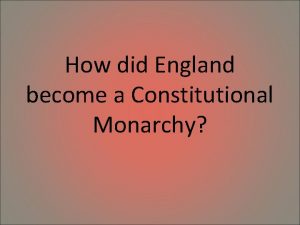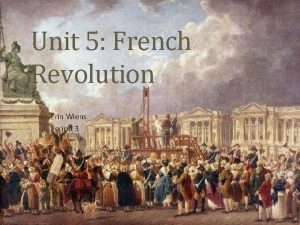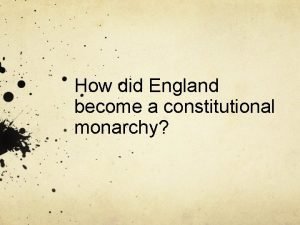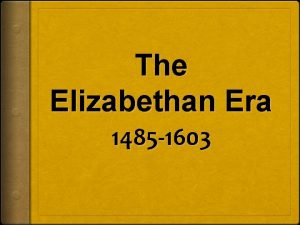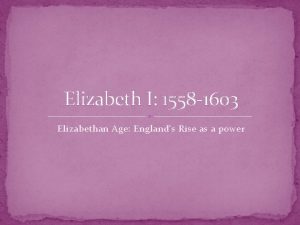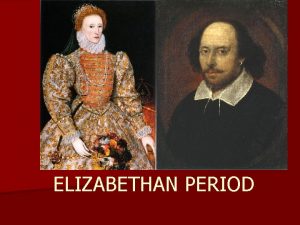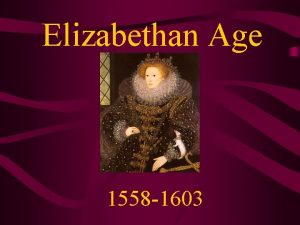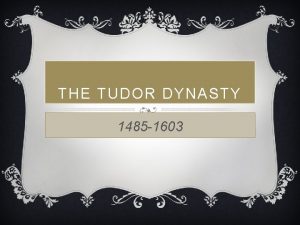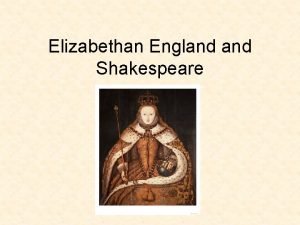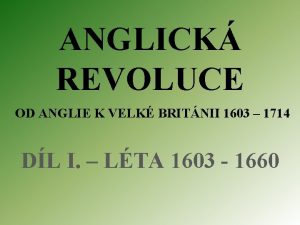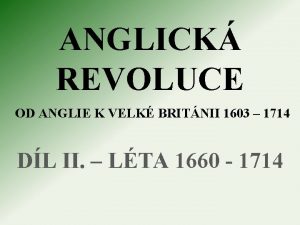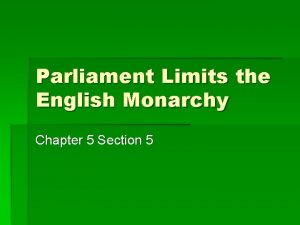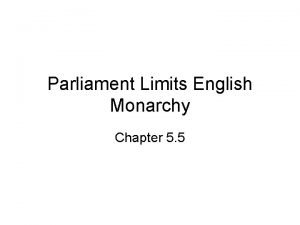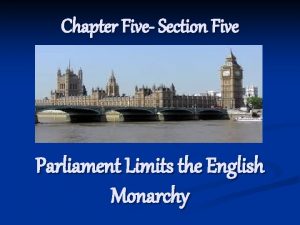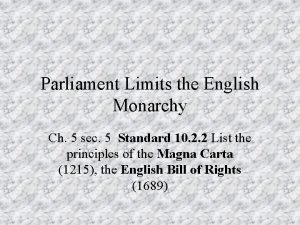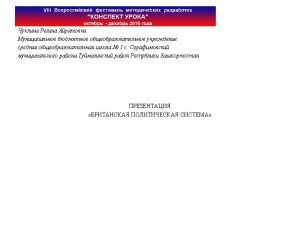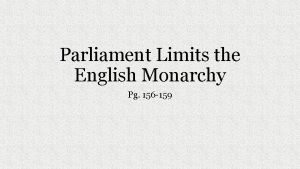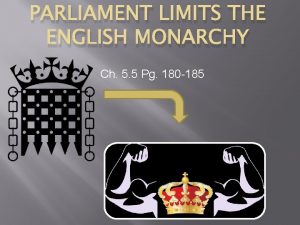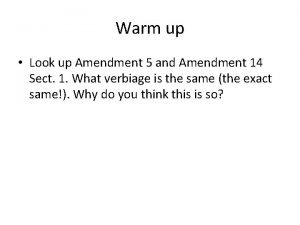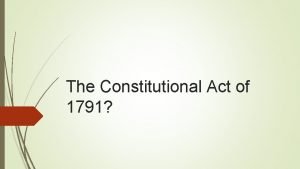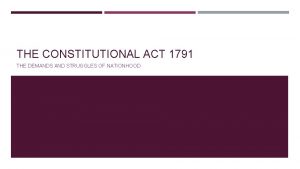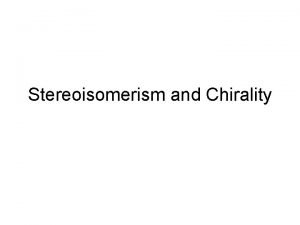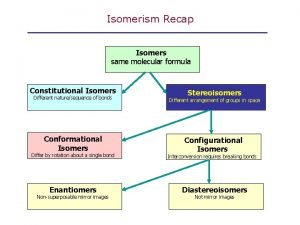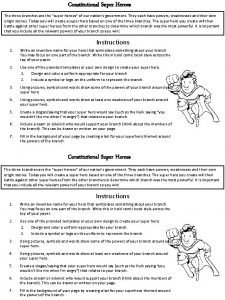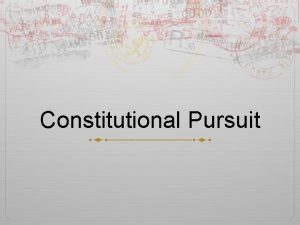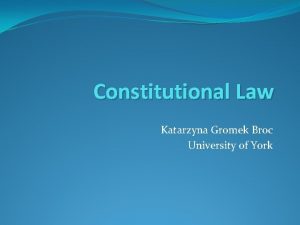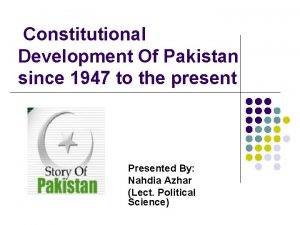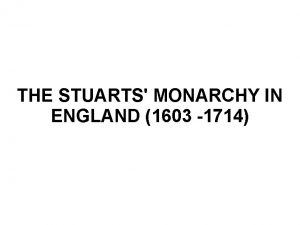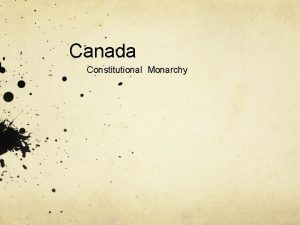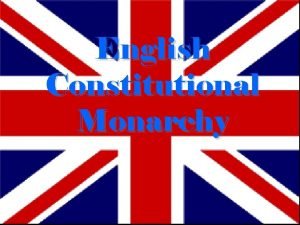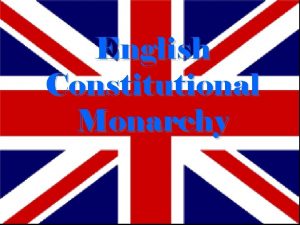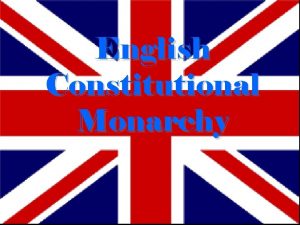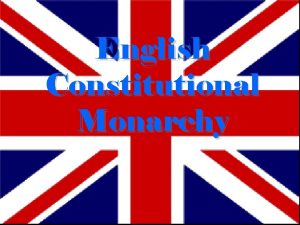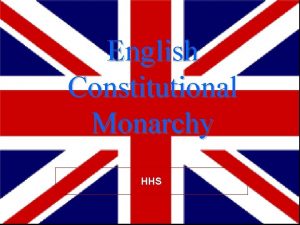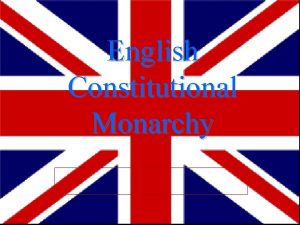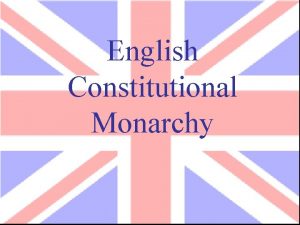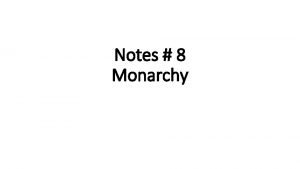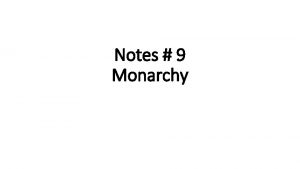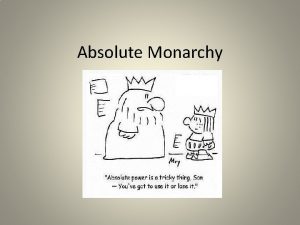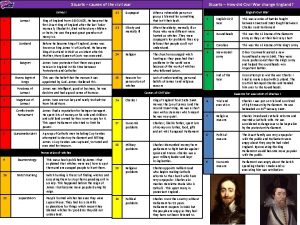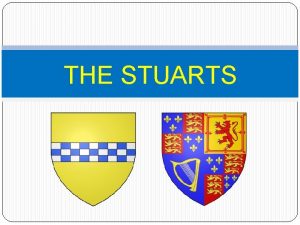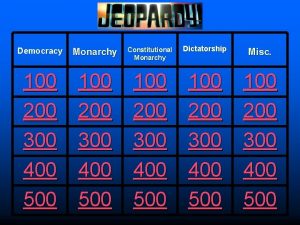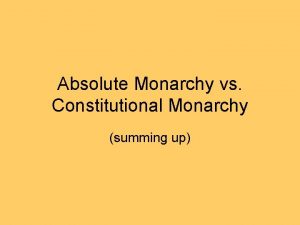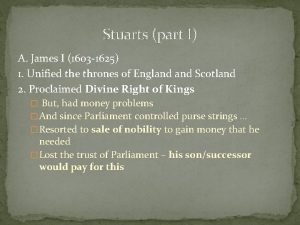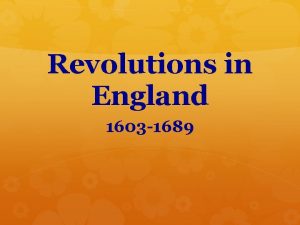English Constitutional Monarchy The Early Stuarts 1603 1649



![James I [r. 1603 -1625] James I’s speech to the House of Commons: I James I [r. 1603 -1625] James I’s speech to the House of Commons: I](https://slidetodoc.com/presentation_image/a489163d7917228ac740d7c12c11ad14/image-4.jpg)

![James I [r. 1603 -1625] a Wanted absolute power. a He quickly alienated a James I [r. 1603 -1625] a Wanted absolute power. a He quickly alienated a](https://slidetodoc.com/presentation_image/a489163d7917228ac740d7c12c11ad14/image-6.jpg)
![James I [r. 1603 -1625] a Alienated the Puritans by his strong defense of James I [r. 1603 -1625] a Alienated the Puritans by his strong defense of](https://slidetodoc.com/presentation_image/a489163d7917228ac740d7c12c11ad14/image-7.jpg)
![James I [r. 1603 -1625] a Problems he faced: § Large royal debt. § James I [r. 1603 -1625] a Problems he faced: § Large royal debt. §](https://slidetodoc.com/presentation_image/a489163d7917228ac740d7c12c11ad14/image-8.jpg)

![Charles I [r. 1625 -1649] a Inherits his fathers throne a Pro-ceremonies and rituals, Charles I [r. 1625 -1649] a Inherits his fathers throne a Pro-ceremonies and rituals,](https://slidetodoc.com/presentation_image/a489163d7917228ac740d7c12c11ad14/image-10.jpg)








![Oliver Cromwell [1599 -1658] † Officer of the Parliamentary army [Roundheads] the New Model Oliver Cromwell [1599 -1658] † Officer of the Parliamentary army [Roundheads] the New Model](https://slidetodoc.com/presentation_image/a489163d7917228ac740d7c12c11ad14/image-19.jpg)
![The Battle of Naseby [reenactment], 1645 a Charles I is defeated at Marston Moor, The Battle of Naseby [reenactment], 1645 a Charles I is defeated at Marston Moor,](https://slidetodoc.com/presentation_image/a489163d7917228ac740d7c12c11ad14/image-20.jpg)

![The “Interregnum” Period [16491660] † The Commonwealth (1649 -1653) † The Protectorate (1654 -1660) The “Interregnum” Period [16491660] † The Commonwealth (1649 -1653) † The Protectorate (1654 -1660)](https://slidetodoc.com/presentation_image/a489163d7917228ac740d7c12c11ad14/image-22.jpg)

![The Puritan Commonwealth [1649 -1653] † Cromwell rules with the Rump Parliament. † Constitutional The Puritan Commonwealth [1649 -1653] † Cromwell rules with the Rump Parliament. † Constitutional](https://slidetodoc.com/presentation_image/a489163d7917228ac740d7c12c11ad14/image-24.jpg)


![The Protectorate [1653 -1660] † Cromwell tears up the ineffective Constitution. † Dismisses the The Protectorate [1653 -1660] † Cromwell tears up the ineffective Constitution. † Dismisses the](https://slidetodoc.com/presentation_image/a489163d7917228ac740d7c12c11ad14/image-27.jpg)


![King Charles II [r. 1660 -1685] a Had charm, poise, & political skills [unlike King Charles II [r. 1660 -1685] a Had charm, poise, & political skills [unlike](https://slidetodoc.com/presentation_image/a489163d7917228ac740d7c12c11ad14/image-30.jpg)
![King James II [r. 1685 -1688] a Favored Catholics- he WAS a Catholic and King James II [r. 1685 -1688] a Favored Catholics- he WAS a Catholic and](https://slidetodoc.com/presentation_image/a489163d7917228ac740d7c12c11ad14/image-31.jpg)
![King James II [r. 1685 -1688] a He is RAN out of England flees King James II [r. 1685 -1688] a He is RAN out of England flees](https://slidetodoc.com/presentation_image/a489163d7917228ac740d7c12c11ad14/image-32.jpg)

![English Bill of Rights [1688] a Settled issues between Parliament and monarchy a It English Bill of Rights [1688] a Settled issues between Parliament and monarchy a It](https://slidetodoc.com/presentation_image/a489163d7917228ac740d7c12c11ad14/image-34.jpg)
![English Bill of Rights [1689] a Main provisions: 1. The King could not suspend English Bill of Rights [1689] a Main provisions: 1. The King could not suspend](https://slidetodoc.com/presentation_image/a489163d7917228ac740d7c12c11ad14/image-35.jpg)

- Slides: 36

English Constitutional Monarchy

The Early Stuarts (1603 -1649)

The Stuart Monarchy
![James I r 1603 1625 James Is speech to the House of Commons I James I [r. 1603 -1625] James I’s speech to the House of Commons: I](https://slidetodoc.com/presentation_image/a489163d7917228ac740d7c12c11ad14/image-4.jpg)
James I [r. 1603 -1625] James I’s speech to the House of Commons: I am surprised that my ancestors should ever be permitted such an institution to come into existence. I am a stranger, and found it here when I arrived, so that I am obliged to put up with what I cannot get rid of!

James I • Mother was Mary, Queen of Scots Father was a Lord- both were executed Left to be raised by Protestant relatives- King James VI of Scotland King James I of England He inherits the English throne when Elizabeth I dies of cancer in 1603 2. "Great Britain" coined by him (united Scotland England together) Stuart Monarchy 3. STRONG supporter of the "divine right to rule" felt he did not need Parliament's authority God granted him the throne- 1604 he created the English translation of the bible 4. Dies- son Charles I takes the throne in 1625 and continues his father's ideology
![James I r 1603 1625 a Wanted absolute power a He quickly alienated a James I [r. 1603 -1625] a Wanted absolute power. a He quickly alienated a](https://slidetodoc.com/presentation_image/a489163d7917228ac740d7c12c11ad14/image-6.jpg)
James I [r. 1603 -1625] a Wanted absolute power. a He quickly alienated a Parliament a Tudors acted on the premise that monarch and Parliament TOGETHER ruled England as a “balance polity. ”
![James I r 1603 1625 a Alienated the Puritans by his strong defense of James I [r. 1603 -1625] a Alienated the Puritans by his strong defense of](https://slidetodoc.com/presentation_image/a489163d7917228ac740d7c12c11ad14/image-7.jpg)
James I [r. 1603 -1625] a Alienated the Puritans by his strong defense of the Anglican Church. a Many of England’s gentry [mostly rich landowners below the level of the nobility] became Puritans. § These Puritan gentry formed an important and large part of the House of Commons. § It was NOT WISE to alienate them!
![James I r 1603 1625 a Problems he faced Large royal debt James I [r. 1603 -1625] a Problems he faced: § Large royal debt. §](https://slidetodoc.com/presentation_image/a489163d7917228ac740d7c12c11ad14/image-8.jpg)
James I [r. 1603 -1625] a Problems he faced: § Large royal debt. § He wasn’t English and he didn’t understand English customs [esp. English law!] § Believed in Divine Right of Kings. § Pro-Catholic sympathies. § Clashed with Parliament v He raised money without Parliament’s consent!

King James Bible, 1611
![Charles I r 1625 1649 a Inherits his fathers throne a Proceremonies and rituals Charles I [r. 1625 -1649] a Inherits his fathers throne a Pro-ceremonies and rituals,](https://slidetodoc.com/presentation_image/a489163d7917228ac740d7c12c11ad14/image-10.jpg)
Charles I [r. 1625 -1649] a Inherits his fathers throne a Pro-ceremonies and rituals, which OFFEND many Protestants, esp. radical ones (Puritans) a Seen as too pro-Catholic by the Puritans. a Just like his father, he believes in the divine right to rule

What will happen to Charles I? You decide • Partner up on a computer • You will be Charles I • Summarize issues you deal with as King of England • Decide what you WOULD do • See what actually HAPPENED

Charles I & Parliament a Constantly at war with Spain and France. § Always need £, but how to get it? ? a Usually Parliament would give Charles money from taxes to fund his wars. a Periodically, Parliament would deny funds. § In return, Charles would dissolve Parliament and try to rule England without it -find funds in other ways. v Forced “loans, ” selling aristocratic titles, etc.

The “Short” Parliament a “Short Parliament” § No Parliament in 20 yrs. a Calls Parliament into session in 1640 Charles dismisses them after 3 weeks. Charles I by Van Dyck (1633)

The “Long” Parliament a In session from 1640 to 1660. § Parliament must be called in session at least once every 3 yrs. § Parliament can’t be adjourned without its own consent! a Charles enters the House of Commons to end the session and arrest 5 MPs unsuccessful a Charles heads north to form an army!

The Civil War (1642 -1649)

Civil War (1642 -1649) Royalists (Cavaliers)) Parliamentarians (Roundheads) a Aristocracy † Puritans a Large landowners † Merchants a Church officials † Townspeople a More rural † More urban

Roundheads Cavaliers

Who was Oliver Cromwell? • View video clip and give me YOUR opinion?
![Oliver Cromwell 1599 1658 Officer of the Parliamentary army Roundheads the New Model Oliver Cromwell [1599 -1658] † Officer of the Parliamentary army [Roundheads] the New Model](https://slidetodoc.com/presentation_image/a489163d7917228ac740d7c12c11ad14/image-19.jpg)
Oliver Cromwell [1599 -1658] † Officer of the Parliamentary army [Roundheads] the New Model Army. † Led the army that defeated royal forces and now controlled the government. † Helps establish the Commonwealth
![The Battle of Naseby reenactment 1645 a Charles I is defeated at Marston Moor The Battle of Naseby [reenactment], 1645 a Charles I is defeated at Marston Moor,](https://slidetodoc.com/presentation_image/a489163d7917228ac740d7c12c11ad14/image-20.jpg)
The Battle of Naseby [reenactment], 1645 a Charles I is defeated at Marston Moor, Naseby, and Preston. a He is handed over to Parliament.

The Interregnum (1649 -1660)
![The Interregnum Period 16491660 The Commonwealth 1649 1653 The Protectorate 1654 1660 The “Interregnum” Period [16491660] † The Commonwealth (1649 -1653) † The Protectorate (1654 -1660)](https://slidetodoc.com/presentation_image/a489163d7917228ac740d7c12c11ad14/image-22.jpg)
The “Interregnum” Period [16491660] † The Commonwealth (1649 -1653) † The Protectorate (1654 -1660)

Beheading of Charles I, 1649 † The vote by the Rump Parliament was 68 -67.
![The Puritan Commonwealth 1649 1653 Cromwell rules with the Rump Parliament Constitutional The Puritan Commonwealth [1649 -1653] † Cromwell rules with the Rump Parliament. † Constitutional](https://slidetodoc.com/presentation_image/a489163d7917228ac740d7c12c11ad14/image-24.jpg)
The Puritan Commonwealth [1649 -1653] † Cromwell rules with the Rump Parliament. † Constitutional Republic § Created a constitution § An executive [Cromwell] § No monarch. † Europe is appalled other nations don’t recognize it.

Rebels within a Rebellion: Diggers/Levellers † Agrarian “communists” led by Gerrard Winstanley and William Everard seen as the “true Levellers. ” † With Charles I gone, they felt that land should now be distributed to the poor. † Food prices had reached record highs in the 1640 s.

Cromwell Dissolves the “Rump” Parliament in 1653
![The Protectorate 1653 1660 Cromwell tears up the ineffective Constitution Dismisses the The Protectorate [1653 -1660] † Cromwell tears up the ineffective Constitution. † Dismisses the](https://slidetodoc.com/presentation_image/a489163d7917228ac740d7c12c11ad14/image-27.jpg)
The Protectorate [1653 -1660] † Cromwell tears up the ineffective Constitution. † Dismisses the Rump Parliament and rules with the support of the military. § Declares martial law. § Military dictator. † Religious tolerance for all [esp. for Jews], except for Catholics. † Crushes a rebellion in Scotland. † Crushes a rebellion among the Catholics of Ireland kills 40% of all ethnic Irish!

Cromwell—Lord Protector or King? ? † England longs for an end to martial law! † Cromwell dies in 1658 and his son, Richard, takes over, but is weak and lasts for only two years.

The Restoration (1660 -1688) Parliament could no more exist without the Crown than the Crown without Parliament. This was the most important lesson of the English Civil War!
![King Charles II r 1660 1685 a Had charm poise political skills unlike King Charles II [r. 1660 -1685] a Had charm, poise, & political skills [unlike](https://slidetodoc.com/presentation_image/a489163d7917228ac740d7c12c11ad14/image-30.jpg)
King Charles II [r. 1660 -1685] a Had charm, poise, & political skills [unlike his father!]. a Restored theaters and reopened the pubs and brothels closed during the Restoration. a Favored religious toleration. a Had secret Catholic sympathies. a Realized that he could not repeat the mistakes his father had made.
![King James II r 1685 1688 a Favored Catholics he WAS a Catholic and King James II [r. 1685 -1688] a Favored Catholics- he WAS a Catholic and](https://slidetodoc.com/presentation_image/a489163d7917228ac740d7c12c11ad14/image-31.jpg)
King James II [r. 1685 -1688] a Favored Catholics- he WAS a Catholic and MARRIES a Catholic a Would not Tolerate all religions- especially Protestants a Claimed the power to suspend or dispense with Acts of Parliament. a 1687 Declaration of Liberty of Conscience § He extended religious toleration without Parliament’s approval or support. § Has a Catholic SON! How could this lead to conflict?
![King James II r 1685 1688 a He is RAN out of England flees King James II [r. 1685 -1688] a He is RAN out of England flees](https://slidetodoc.com/presentation_image/a489163d7917228ac740d7c12c11ad14/image-32.jpg)
King James II [r. 1685 -1688] a He is RAN out of England flees to France

The “Glorious” Revolution: 1688 a Parliament leaders offered the throne jointly to James II’s daughter Mary [raised a Protestant] & her husband, William of Orange (Dutch) § He was a vigorous enemy of Louis XIV. § He was seen as a champion of the Protestant cause.
![English Bill of Rights 1688 a Settled issues between Parliament and monarchy a It English Bill of Rights [1688] a Settled issues between Parliament and monarchy a It](https://slidetodoc.com/presentation_image/a489163d7917228ac740d7c12c11ad14/image-34.jpg)
English Bill of Rights [1688] a Settled issues between Parliament and monarchy a It served as a model for the U. S. Bill of Rights.
![English Bill of Rights 1689 a Main provisions 1 The King could not suspend English Bill of Rights [1689] a Main provisions: 1. The King could not suspend](https://slidetodoc.com/presentation_image/a489163d7917228ac740d7c12c11ad14/image-35.jpg)
English Bill of Rights [1689] a Main provisions: 1. The King could not suspend the operation of laws. 2. The King could not interfere with the ordinary course of justice. 3. No taxes levied or standard army maintained in peacetime without Parliament’s consent. 4. Freedom of speech in Parliament. 5. Sessions of Parliament would be held frequently. 6. Subjects had the right of bail, petition, and freedom from excessive fines and cruel and unusual punishment. 7. The monarch must be a Protestant. 8. Freedom from arbitrary arrest. 9. Censorship of the press was dropped. 10. Religious toleration.

The Seesaw of King & Parliament:
 The restoration and the last stuarts
The restoration and the last stuarts Who governs dictatorship
Who governs dictatorship Constitutional monarchy pictures
Constitutional monarchy pictures When did england become a constitutional monarchy
When did england become a constitutional monarchy French revolution conclusion
French revolution conclusion When did england become a constitutional monarchy
When did england become a constitutional monarchy Apothecary elizabethan era
Apothecary elizabethan era Error 1603 kaspersky
Error 1603 kaspersky Kaspersky 1603
Kaspersky 1603 1868-1603
1868-1603 Elizabethan era background
Elizabethan era background 1558 1603
1558 1603 1485 to 1603
1485 to 1603 What happened in 1603 shakespeare
What happened in 1603 shakespeare 1603 in inglese
1603 in inglese Bitva u naseby
Bitva u naseby Velk�� brit��nie pr��ce
Velk�� brit��nie pr��ce Pr��ce anglie
Pr��ce anglie Chapter 21 section 5 parliament limits the english monarchy
Chapter 21 section 5 parliament limits the english monarchy Chapter 5 section 5 parliament limits the english monarchy
Chapter 5 section 5 parliament limits the english monarchy Parliament limits the english monarchy answer key
Parliament limits the english monarchy answer key Parliament limits the english monarchy
Parliament limits the english monarchy What are the name
What are the name Parliament limits the english monarchy
Parliament limits the english monarchy Parliament limits the english monarchy
Parliament limits the english monarchy Early cpr and early defibrillation can: *
Early cpr and early defibrillation can: * Gitlow v new york constitutional question
Gitlow v new york constitutional question Constitutional act of 1791
Constitutional act of 1791 Constitutional act of 1791
Constitutional act of 1791 Meso compound
Meso compound Right to constitutional remedies
Right to constitutional remedies Isomers of c6h14
Isomers of c6h14 Enantiomers and diastereomers
Enantiomers and diastereomers Executive branch superhero
Executive branch superhero Constitutional pursuit answer sheet
Constitutional pursuit answer sheet Scope of constitutional law
Scope of constitutional law Constitutional development in pakistan from 1947 to 1973
Constitutional development in pakistan from 1947 to 1973
